Happy Birthday Amalfi Coast Road!
Celebrating the 170th anniversary of one very unique road.
What do you get a road for its birthday?
That’s probably a sentence—let alone an idea—you’ve never had a good reason to contemplate. But this isn’t just any road. This is the strada statale 163 Amalfitana (SS 163), the one and only Amalfi Coast Road. Praised for its beauty, cursed for its many curves, feared for its stability in stormy weather, and—no matter how carsick you get—essential for modern life on the Amalfi Coast.
12 January 1853: A Star (Road) Is Born
Earlier this month I read an interesting article—“12 gennaio 1853: la solenne inaugurazione della strada rotabile della Costa d’Amalfi” (“12 January 1853: The Solemn Inauguration of the Amalfi Coast Road”)—written by local historian Donato Sarno in Il Quotidiano della Costiera. It highlighted a date that I hadn’t ever focused on: January 12, 1853. This was the initial inauguration of the Amalfi Coast Road, which at that time only extended from Vietri sul Mare to Amalfi. If you’ve driven along the Amalfi Coast, you’ll know that’s only about half of the road today, which continues from Amalfi to Positano and over the mountains to Sorrento. It also means that in 1853 you couldn’t take a carriage to Positano. You’d have to wait until the early 1890s to do that, but that’s getting ahead of ourselves.
- Amalfi in the 1800s in a photo by Giacomo Brogi (1822-1881).
When the Amalfi Coast Road was completed at the end of 1852, it was a work of remarkable engineering and impressive beauty. It had been under construction for nearly 40 years and it linked by carriageway the towns of the Amalfi Coast—Amalfi, Atrani, Minori, Maiori, Cetara, and Vietri sul Mare—to Salerno. (No, not Ravello. You’ll be taking a donkey or the steps up to Ravello for many years yet.) For the first time in its long history, the Amalfi Coast was connected by roads to Naples and the rest of Italy. Well, to be more precise, it was connected to the Kingdom of Two Sicilies.
Wait, now you might be thinking, “Laura, per carità, there aren’t two Sicilies. (And, wait, did you say donkeys?)” For this month’s On the Road series, and as a (belated) gift for the Amalfi Coast Road, let’s take a look at its fascinating history, one that’s full of just as many twists and turns as the road itself. Buckle up for a trip down memory lane - Amalfi Coast style. I’ll do my best to not make you carsick!
- The Amalfi Coast road between Amalfi and Minori in a photo by Ernesto Samaritani (1896-1981).
Building a Road Fit for a King
Let’s go back 170 years to January 12, 1853, which was a fine and clear day, not unlike these beautiful January days we’ve been enjoying. This wasn’t a day selected by chance for the inauguration of the newly completed road. This was the birthday of King Ferdinando II delle Due Sicilie (1810-1859), the Bourbon ruler of the Kingdom of the Two Sicilies. Keep in mind that going back to 1853 means we’re before the Unification of Italy when what we call Italy today was formed of many sovereign states, republics, and independent entities.
In the 1800s, specifically from 1816 to the Unification in 1861, the Amalfi Coast was part of the Kingdom of the Two Sicilies, which covered all of southern Italy and Sicily. It was vast—the largest sovereign state before the Unification—and old. The connection between Naples and Sicily is a long one, the Two Sicilies name going well back to the War of the Sicilian Vespers (1282-1302) and the division of the Kingdoms and Naples and Sicily. But, lest we lose our way and never make it back to the Amalfi Coast Road, the scene has been set: Ferdinando II has been crowned king of the united Kingdom of the Two Sicilies in 1830, which he would rule until his death in 1859.
- Road to Amalfi in the 1800s, photo Ed. Alinari.
This was a period of great social upheaval in many ways - and in their own way the people of the Amalfi Coast had had enough. The plan to build a road along the rugged and isolated Amalfi Coast dates back to the 18th century. In 1806, interest was again renewed in building a road that would connect the town of Amalfi with Naples via Agerola. This project was greatly contested by Maiori and Tramonti since they would be left out. After four years of discussions, a new plan was finally approved in 1811 by another king of Naples, this time King Gioacchino Murat (1767-1815), none other than Napoleon’s brother-in-law. This project was to connect the Amalfi Coast with Naples via a road over the Chiunzi Pass via Tramonti and Maiori. Work had even begun in 1815, but after about 10 years the road had only stretched from Amalfi to Maiori and work halted due to economic and practical problems, including engineering complications for the road to Tramonti.
By 1824, faced with these complications, all the towns of the Amalfi Coast finally agreed on one thing: their road would run along the coastline from Amalfi through Atrani, Minori, Maiori, Cetara, and Vietri sul Mare to Salerno.1 Finally agreed upon the direction, in 1835, a new plan was approved, this time by Ferdinando II, to continue the road along the coastline - direction Salerno. It was by no means an easy task. The unrelenting curves of the road are shaped to the coastline, at times seeming only tentatively attached while at others so deeply embedded they tunnel right through the mountainside.
- The road from Vietri sul Mare to Salerno in a photo by Giorgio Sommer (1832-1914).
Inauguration Day
Amalfi historian Matteo Camera (1807-1891), who was present at the inauguration ceremony, left us with a description of the road that 170 years later still captures its beauty and reminds us of its scale:
"… Gigantic work, of great utility, of the utmost desire and of immense expense, unique in its kind and design, as for the pleasant and varied viewpoints that at every stretch meet you as you travel it from one end to the other (…) even more beautiful than that of Sorrento (…) galleries protruding over the sea, cut into the rocks (…) magnificent in all respects.”2
When inaugurated, the road was dedicated to Ferdinand II and was originally called the "Strada Ferdinandea della Costiera di Amalfi." (I know, not exactly catchy.) After the Unification of Italy, the name was dropped. Exactly 100 years later, in 1953, it officially became the strada statale 163 Amalfitana, the SS 163, which you'll see marked in colorful ceramic signs all along the road today.3
- The road from Castellammare to Meta in a photo by Carlo Brogi (1850-1925).
Just the Beginning
Of course, there’s not really just one “birthday” for the Amalfi Coast road. It would take until the early 1890s for the rest of the road from Amalfi along the coast to Positano and over to Meta in Sorrento to be completed.4 The road from Tramonti and Ravello over the Chiunzi pass would take many years to complete. And remember that original plan to have a road pass over the mountains in Agerola? That one didn’t open until 1935, during Italy’s Fascist period. Here’s a glimpse of the inauguration of the road to Agerola on May 8, 1935:
From carriages to cars and today buses, scooters, and electric bikes, the Amalfi Coast road has seen a lot over the last 170 years. And this just scratches the surface! Each section of the road has so many stories, from the tremendous amount of work involved in creating it to landslides, floods, tourism, and many changes along the way. But those are all stories for another day.
Stories though that it’s good to remember. Which, in the end, is perhaps the best gift we can give the Amalfi Coast road.
Ciao from Amalfi,
Laura
KEEP READING
If you’d like to read more about the Amalfi Coast Road, here are a few more links:
A funny and only slightly embellished description of getting my Italian driver’s license on the Amalfi Coast.
This blog post was written awhile back now, but it has some funny stories about The Wildest Ride in Italy along the Amalfi Coast Road. It includes quotes from John Steinbeck’s crazy experience driving on the road to Positano in 1953 - one hundred years after the road to Amalfi was inaugurated.
An extra thank you to Donato Sarno for the interesting article in Il Quotidiano della Costiera that sparked this reflection on this road that is so much a part of life here on the Amalfi Coast.
P.S.
Don’t forget that I’m offering an Early Bird Sale for 20% off subscriptions if you upgrade to paid now through the end of January 2023. A huge thank you to everyone who has subscribed already! (Read more about it at the end of the January newsletter.)
Leopoldo Cassese, Problemi del turismo nel Salernitano fra il Sette e l'Ottocento, (Salerno, 1959), p. 19.
Matteo Camera quote from “12 gennaio 1853: la solenne inaugurazione della strada rotabile della Costa d’Amalfi,” Donato Sarno, Il Quotidino della Costiera, 12 Gennaio 2023. (Translated by author.)
Massimo Bignardi, I pittori di Maiori. Artisti della Costa d'Amalfi tra XIX e XX secolo, (Centro di Cultura e Storia Amalfitana, 2005), p. 27.





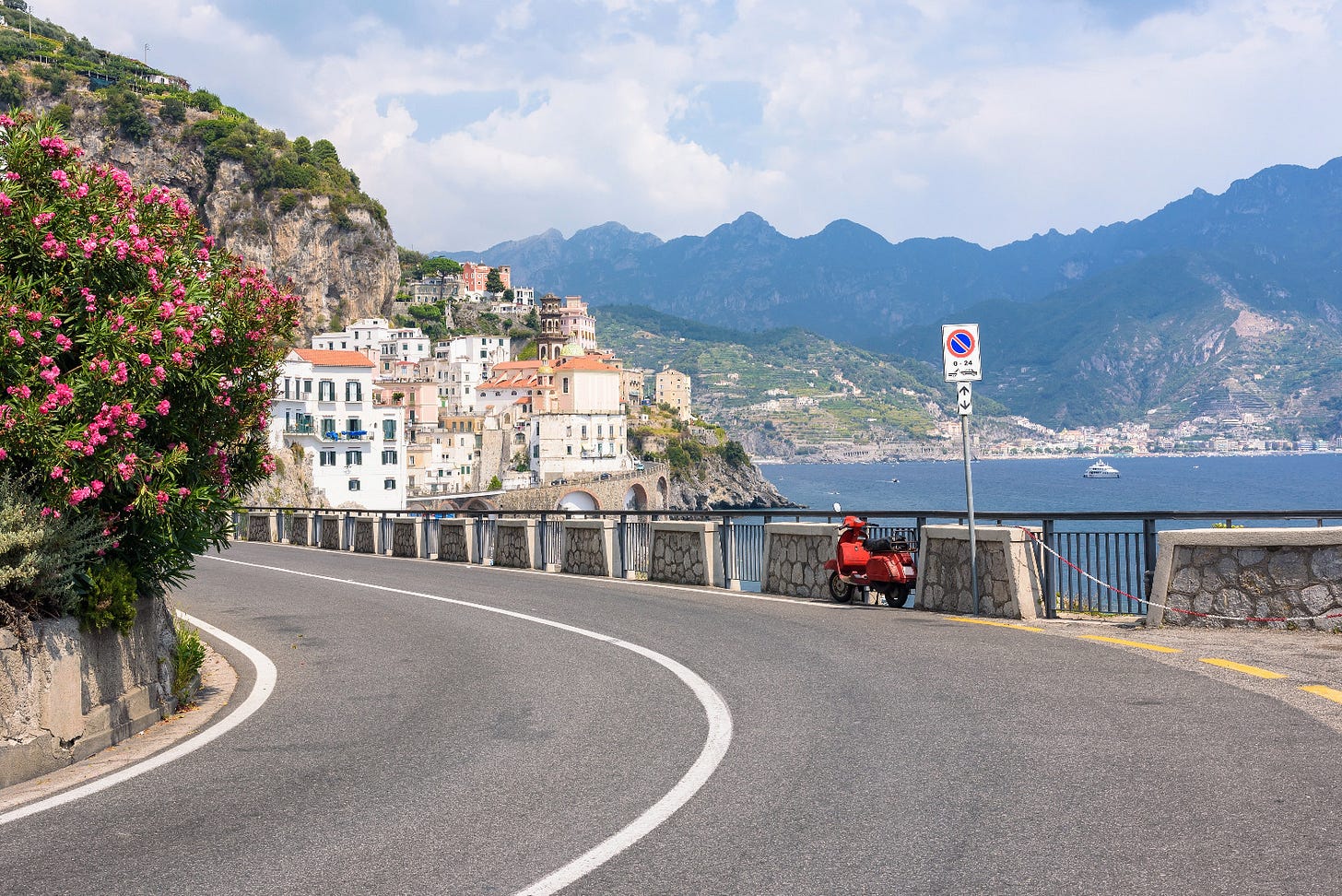
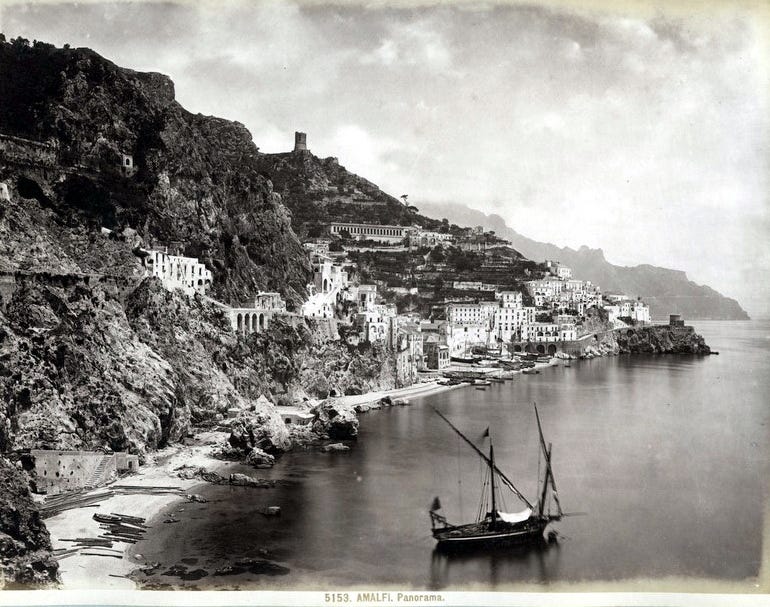
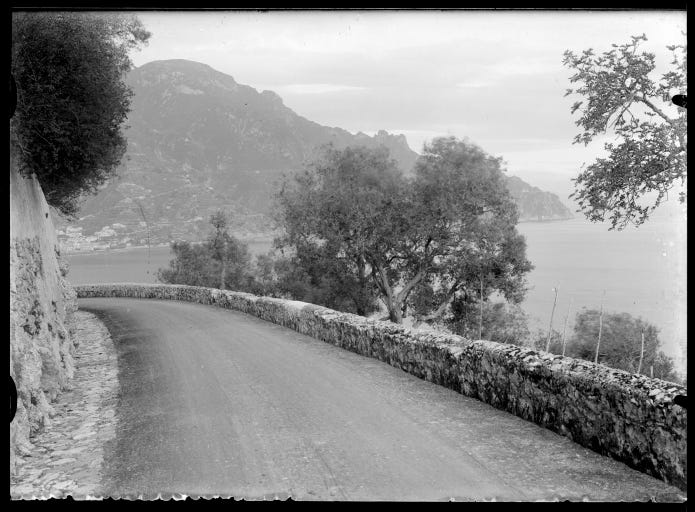
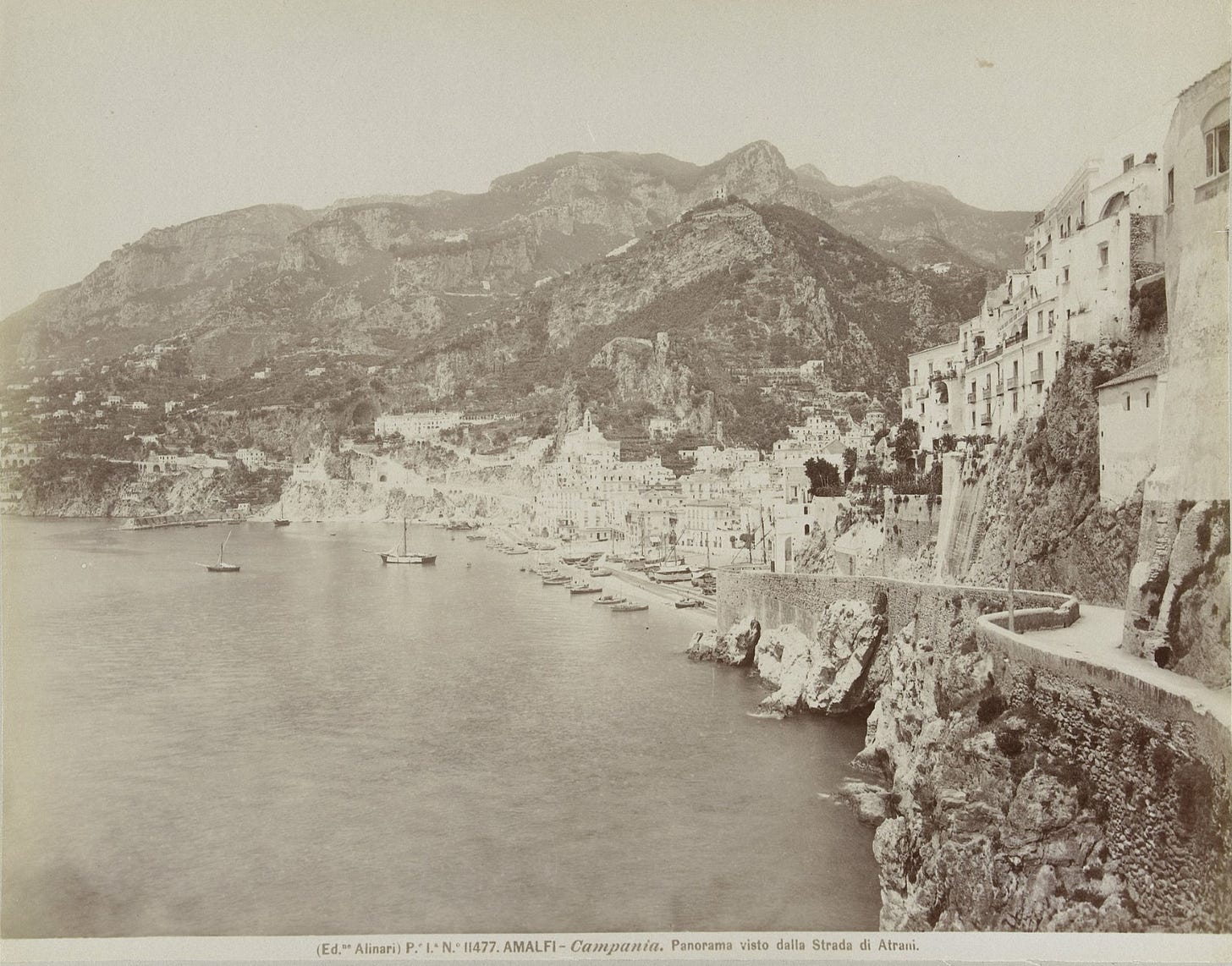
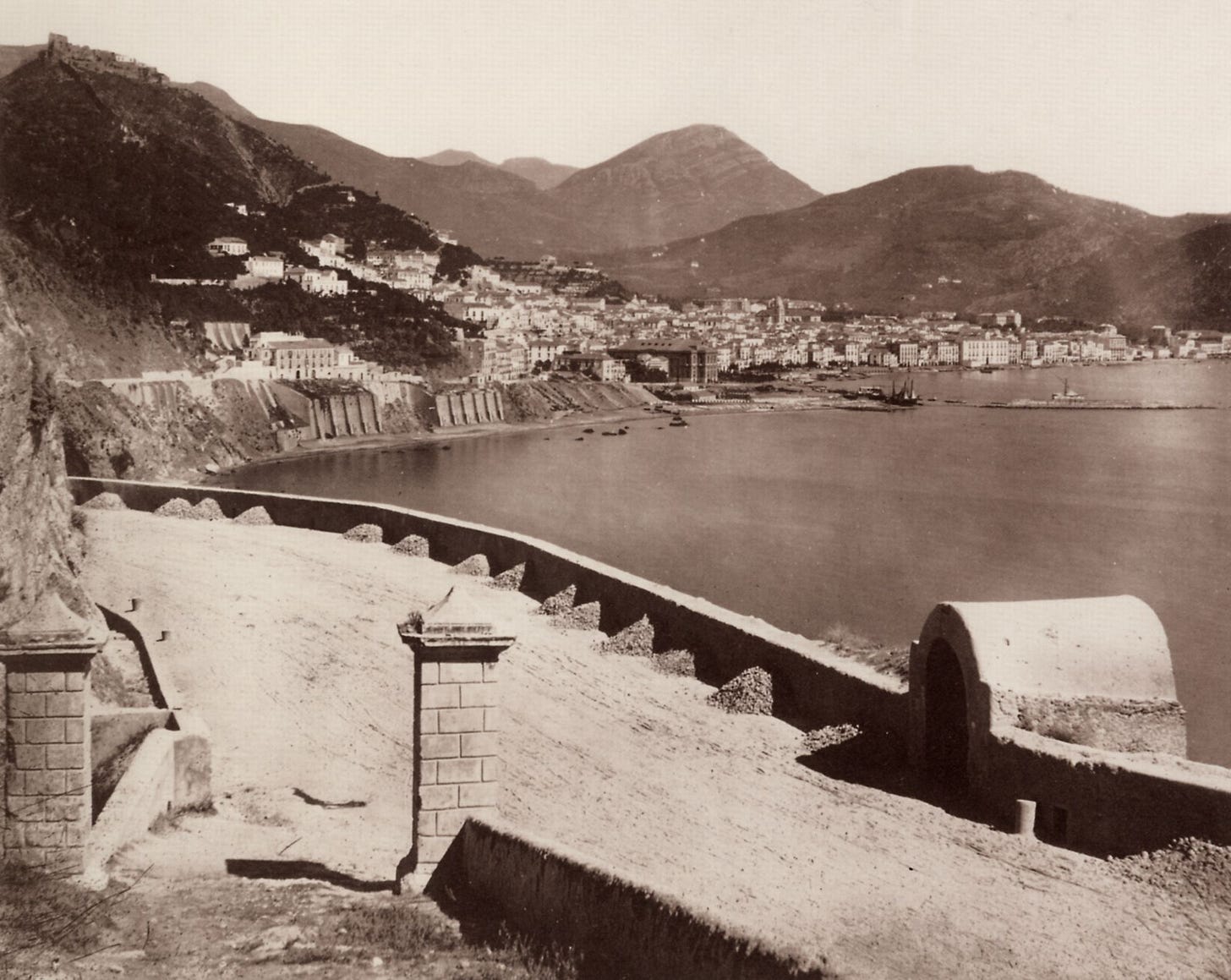
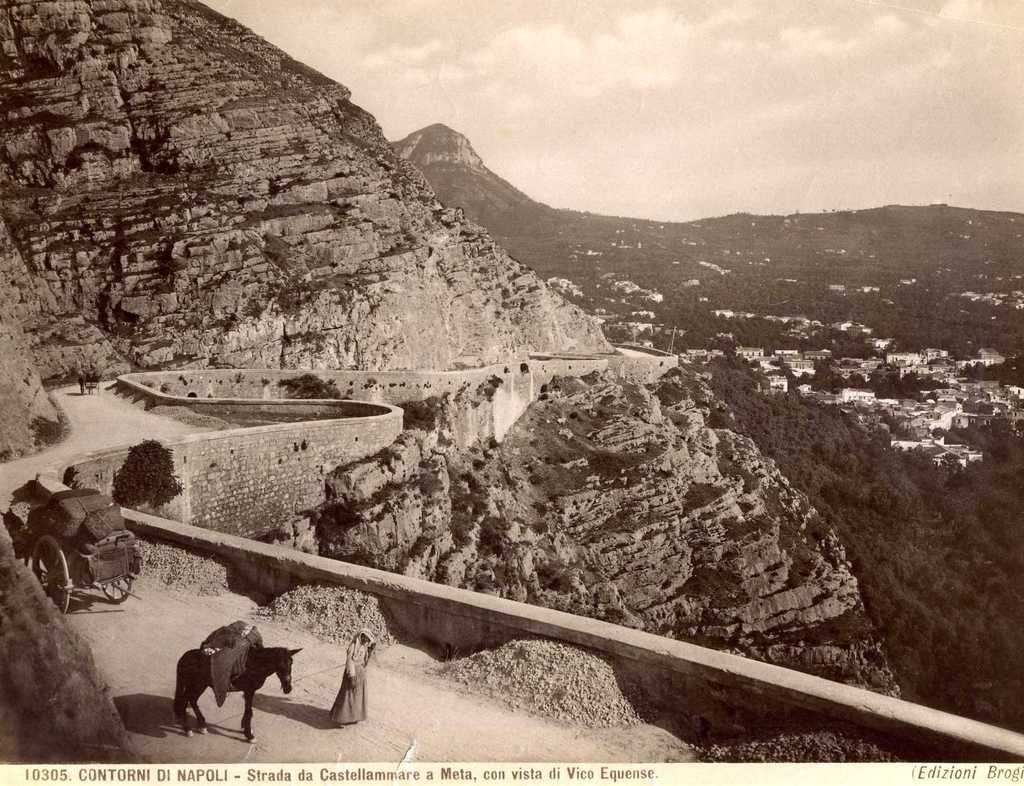
Very interesting, Laura!
Hi Laura, compliments on a terrific and fascinating article. One of my older neighbors in Atrani- he’s in his 80’s & still transports goods. He told me his father and grandfather were also in the transportation business, transporting goods on the coast. He shared stories from his father and grandfather. Talked about the road originally being used by horse drawn transportation, as the car wasn’t even invented until 1883, But became more familiar in the 1900s. He told me it could take up to a full day to get from Atrani to Salerno with a horse drawn cart. Thanks for sharing the article. So interesting. 💕